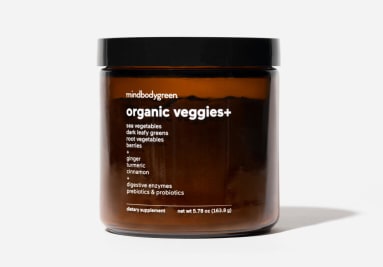The 2023 Dirty Dozen Just Dropped: 4 Ways To Reduce Your Pesticide Exposure
.... without giving up any fruits or vegetables.

Image by Deirdre Malfatto / Stocksy March 31, 2023 At the start of each spring, the latest Dirty Dozen and Clean 15 come out to shake up grocery lists everywhere. Compiled by the Environmental Working Group, these lists use the latest USDA data to name the fruits and vegetables that tend to have the most and least pesticide residue (after they've been given a good washing, to reflect how people actually eat them at home). After analyzing data on 46,569 samples of non-organic fruits and veggies, the watchdog group announced that carrots have knocked off cantaloupe for a spot on the Clean 15 list, while blueberries and green beans are the latest adds to the Dirty Dozen.
Advertisement
This ad is displayed using third party content and we do not control its accessibility features.
Blueberry lovers are up in arms, but why does pesticide residue really matter, anyways? While chemical pesticides effectively protect crops from pests, weeds, and mold (we would have far fewer produce options, and they would be far more expensive, without pesticides), they do have their downsides. The use of chemical pesticides on farms can harm surrounding biodiversity1, pollute nearby waterways2, and harm soil strength and microbial diversity3. The consistent use of some pesticides can also threaten farmworker health4. From a shopper's perspective, eating a nutritious diet that's low in pesticide residues has been associated with some tasty health outcomes. In newly published research5 that monitored the health of more than 150,000 people for over 20 years, those who ate a diet rich in low-pesticide fruits and vegetables had a 36% lower mortality risk than those who ate hardly any fruit or veg—while eating a diet rich in higher pesticide produce did not seem to have any impact on mortality. If you're looking to support the movement towards alternative methods of crop protection, here are a few ways to forego pesticides, while still getting your fruit and veggie fix, in the year ahead. 1. If your grocery budget allows you to buy all organic produce, by all means, do. But if record-high food prices have you looking for opportunities to save, the Clean 15 list is a solid place to start. Avocados, sweet corn, pineapples, and onions are a few of the ingredients that tend to have very few detectable pesticides, so you can get away with buying them conventional and just giving them a good rinse when you get home. Note that most of the produce on the Clean 15 list is covered in a tough outer peel, husk, or shell that protects the inner edible part from pesticides; makes sense! This is an easy thing to remember the next time you're shopping and don't have the list handy. Use your low-pesticide produce haul to welcome spring with a corn ital stew, onion and corn salsa, or bruschetta avocado toast. 2. If pesticides are a concern for you, you'll want to shell out for organic versions of strawberries, spinach, kale, peaches, pears, and other produce that made this year's Dirty Dozen list. Ideally, you'll also buy these items from local (within 400 miles or so) farms while they're in season, to reduce their time in transit. If organic isn't an option, that doesn't mean you should avoid these ingredients altogether. Eating a variety of fruits and vegetables is an undisputed foundation of good health (have you tried the 30 plants a week challenge?) and we'd argue that eating kale treated with pesticides is a much better option than not eating kale at all. This ad is displayed using third party content and we do not control its accessibility features. 3. Fruit and vegetable supplements make it easy to sneak more plant-based nutrition into your meals. Typically made from plants that have been dried for a powder or capsule, they can help you fit a wider array of nutrients and phytonutrients into your diet. Those wary of pesticides will want to opt for a USDA-certified organic option, like mindbodygreen's organic veggies+ powder. Beyond organic leafy greens, root vegetables, and berries, the formula includes ingredients that might not otherwise be in your shopping cart, like nutrient-rich kelp and algae. Altogether, the whole foods blend packs 31 ingredients for a wide array of vitamins, minerals, and phytonutrients that support overall health. Add a scoop of it to soups, stews, or smoothies for a quick hit of organic nutrients that comes in at less than $3 per serving.* This ad is displayed using third party content and we do not control its accessibility features. 4.Lean into the Clean 15.
For items on the Dirty Dozen, buy organic when you can.
Advertisement
Consider a greens powder.
Advertisement
Peel if you must (but get creative with those scraps).
The takeaway
The latest Dirty Dozen and Clean 15 lists provide guidance on which types of produce tend to contain the most and least pesticides. To reduce your pesticide exposure, you can use the lists for guidance on where to shell out on organic and where to save, introduce an organic greens powder to your routine, find creative ways to heat up your peels, and follow these other best practices for a sustainable, healthy diet.
If you are pregnant, breastfeeding, or taking medications, consult with your doctor before starting a supplement routine. It is always optimal to consult with a health care provider when considering what supplements are right for you.

 BigThink
BigThink 





















.jpg&h=630&w=1200&q=100&v=6e07dc5773&c=1)












